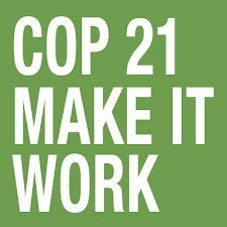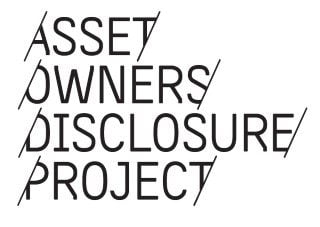

Environment
Global investors launch guide to drive engagement on climate risk with the mining sector
A fortnight before the UN Climate Summit in Paris, and as the OECD deliberates whether to cut subsidies to the coal sector, a global network of more than 270 institutional investors (representing assets worth over €20 trillion) is publishing a guide to drive closer engagement with mining companies around the world about their management of climate risk.
Launching Investor Expectations of Mining Companies – Drilling Deeper into Carbon Asset Risk, Stephanie Pfeifer, Chief Executive at the Institutional Investors Group on Climate Change said today, “As momentum builds towards an international climate deal in Paris, the global investor community is setting out as clearly as possible the expectations it has for mining companies about action required to curb carbon asset risk. The guide has been developed to help investors step up their engagement with the mining sector as part of their ongoing efforts to better manage climate risk across their portfolios.”
Commenting further, Stephanie Maier, Head of Responsible Investment Strategy & Research at Aviva Investors, explains: “With mining companies featuring in many portfolios, investors need to know that these companies are prepared for the likely changing market dynamics arising from policies and actions to curb climate change and the risks they pose to profits.
“To protect their long term interests, investors want assurances that the capital allocation decisions made by the boards of major mining companies give clear consideration to climate change, and to the associated energy transition, in ways that will ensure the future sustainability and profitability of the entire sector.”
The guide is designed to support a constructive dialogue between investors and the mining companies they own about these issues. Bruce Duguid, Associate Director, Hermes EOS, and lead author of the guide added: “Climate change poses clear long-term risks to the current business models of many mining companies, as well as some opportunities. This guide is intended to develop market best practice for investor engagement with mining companies to ensure that decisions are made in the long term interests of shareholders and their beneficiaries”.
North American investors share that concern. Speaking about the guide, Andrew Logan, Director of the Carbon Asset Risk program at Ceres said, ”Going forward, asset owners and fund managers need to know how mining companies – and particularly the boards accountable for overseeing them – see the future of demand, how those views align with the carbon reductions required to deliver binding international agreements reached between governments around the world, and to what extent there may be stranded assets due to those commitments or a shift in demand.”
The guide warns that routine assumptions that underpin many of the demand and price projections used in the mining industry are now open to challenge due to the impact that transition to a low carbon economy (and associated policy changes) will have on patterns of demand, commodity prices, and use of technology.
“Investors recognise that the global economy is now pivoting around the need to limit global warming to two degrees. Diversified mining companies have already begun to shift away from carbon intensive thermal coal and look at the potential for new technologies to achieve net zero carbon operations. The publication of this guide is an important example of the market working to respond to climate change by driving thorough scenario testing, risk analysis and transparency from mining companies,” added Emma Herd, Chief Executive of IGCC Australia and New Zealand.
About the guide
Investor Expectations of Mining Companies – digging deeper into carbon asset risk was developed by the Institutional Investors Group on Climate Change (IIGCC) with support from investor networks in North America (Ceres’ INCR), Australia (IGCC) and South East Asia (AIGCC). It is intended to be used in tandem with Institutional investors’ expectations of corporate climate risk management
The guide is the first in the series of Investor Expectations guides to also have CDP data points linked to the questions to support investor preparation to meetings with companies. Welcoming the guide James Hulse, Head of Investor Initiatives at CDP added:
“CDP is delighted to have worked closely with IIGCC to link the expectations set out in the mining sector guide to the questions in the annual information request we send companies on behalf of 822 investors representing US$95 trillion. This, and our wider analytical tools and reports, support investors working together globally under the Carbon Asset Risk initiative.”
Whilst primarily aimed at diversified mining companies, the guide can equally be applied to any single commodity and therefore be used to inform engagement with companies focused on particular commodity groups such as thermal coal, precious metals, copper or rare earth metals.
The guide sets out investor expectations in reference to six areas of concern:
– Governance – Clearly define board and management governance of climate change risks and implications of energy transition dynamics.
– Operational efficiency (and emissions) – Set long term targets to improve energy efficiency, reduce carbon intensity and curb greenhouse gas emissions from all parts of the business and measure progress
– Strategy implementation – Ensure business model is robust and resilient in the face of a range of energy demand scenarios through appropriate stress testing
– Preparedness for physical impact of climate change – Appraise risks arising from ongoing changes to climate or local weather and put in place plans to preserve productivity and asset values.
– Public policy: Engage with policy makers and other stakeholders in support of cost-effective measures to mitigate climate risks and support low carbon investments. Do not lobby against these positions. Render all lobbying activity / spending on climate and related energy and regulatory issues transparent.
– Transparency and disclosure. Disclose in annual reports and financial filings, the company’s view of and response to each question set out in the guide.




























